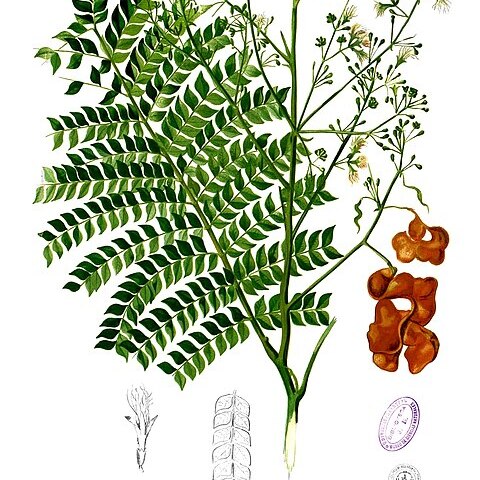Unarmed shrubs or trees. Leaves bipinnate; stipules present or absent; axes and pinnae with extrafloral nectaries; pinnae 1-4-jugate; leaflets opposite (in Australia), 1.5-5 (-6)-jugate, rarely unifoliolate, petiolulate or not. Inflorescences axillary, terminal, ramiflorous or cauliflorous, simple or compound, comprising stalked heads, umbels, or racemes, sometimes arranged in panicles. Flowers 5-merous, bisexual, male or female, or with some bisexual and others male; calyx united, valvate; corolla united in tube connate with staminal tube in lower part. Stamens numerous, united basally; anthers eglandular. Gynoecium of 1-15 pistils, sessile or stalked. Pod flat or terete, coriaceous, fleshy or woody, commonly reddish externally and orange reddish within, opening along 1 suture. Seeds black or bluish black; pleurogram absent.
Trees or shrubs, unarmed. Leaves bipinnate; stipules present or not; petiole, rachis, and pinnae with glands; pinnae in few pairs; leaflets few to several pairs, rarely in 1 pair. Inflorescence a globose head or arranged in panicle, terminal or axillary, or cauliflorous. Flowers white, small, bisexual or polygamous, uniform. Calyx campanulate or tubular, 5-toothed. Petals connate below middle; lobes 5. Stamens numerous; filaments exserted, united into a tube; anthers small, apex eglandular. Carpels 1 to several, free, sessile or stipitate, many ovuled; style filiform; stigma terminal, capitellate. Legume much curved or spirally twisted, or straight, cylindric, flat or swollen. Seeds ovoid or orbicular, without pleurogram.

